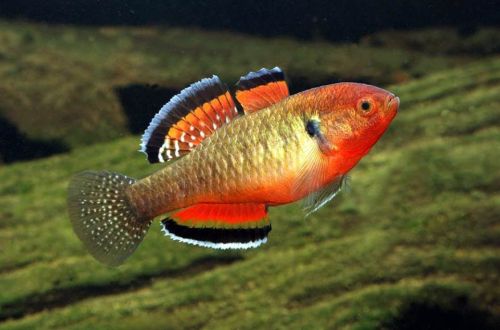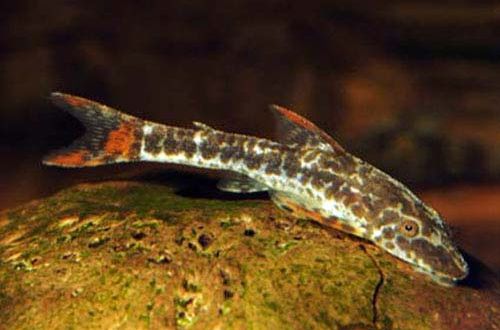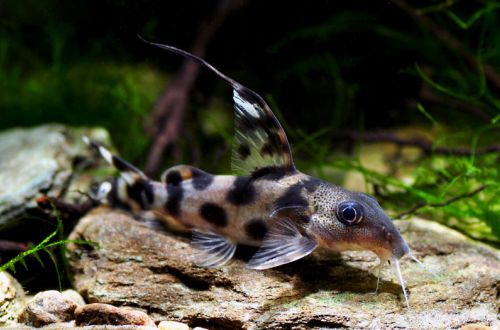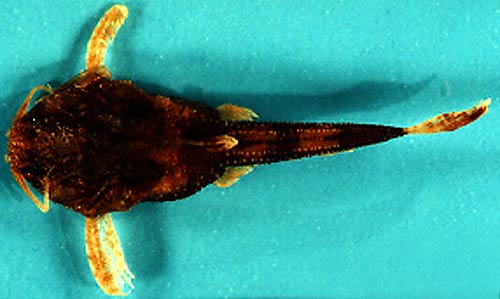
imperial gudgeon
Imperial minnow or Hypseleotris imperial, scientific name Hypseleotris compressa, belongs to the Eleotridae family. Bright unpretentious fish, gets along well with other species. The only difficulty in keeping it is associated with the need to create a brackish habitat.

Contents
Habitat
Occurs from distant Australia, where it occurs in the lower reaches and estuaries of rivers (mouths that flow into the sea) along the northern and eastern ends of the continent, where patches of humid rainforest are still preserved. Wild populations have also been found on the neighboring island of New Guinea. Prefer regions with calm water and dense thickets of aquatic plants.
Brief information:
- The volume of the aquarium – from 80 liters.
- Temperature – 15-35°C
- Value pH — 5.0–9.0
- Water hardness – 2–26 dGH
- Substrate type – any
- Lighting – any
- Brackish water – required in a concentration of 5-10 grams per 1 liter
- Water movement is weak
- The size of the fish is 10–12 cm.
- Food – any variety of food
- Temperament – peaceful
- Content in a group
Description
Adults reach a length of 10–12 cm, but this is the maximum size, in aquariums they usually grow up to only 4–5 cm. A key feature typical of many fish in Australia is the forked dorsal fin. This species is characterized by pronounced sexual dimorphism. Males are noticeably larger and have a variegated coloration that intensifies during the mating season. Primary colors are yellow-red. The fins have black and white trim. Females are smaller with a gray color.
Food
In nature, it feeds on small crustaceans, aquatic insects and their larvae, algae and detritus. In the home aquarium, it will accept most popular dry, frozen and live foods. The main thing is to provide a varied diet that combines various foods. For example, dry flakes, granules with the addition of brine shrimp, bloodworm, daphnia, etc.
Maintenance and care, arrangement of the aquarium
The optimal size of the aquarium for a small flock of these fish starts from 80 liters. Successful long-term keeping of the Imperial gudgeon is only possible in brackish water with a salt concentration of approximately 5-10 grams per liter. Otherwise, it is quite unpretentious, able to successfully adapt to a fairly wide range of temperatures and values of hydrochemical parameters. Due to the low salinity, there is no need to install equipment for marine aquariums. To maintain high water quality, a filtration system and a series of mandatory maintenance procedures are sufficient. The latter include the weekly replacement of part of the water with fresh and timely removal of organic waste. In some cases, for example, in a small tank with a couple of fish, an ordinary airlift filter with a sponge is suitable as a filter.
The layout is arbitrary. The only important condition is the availability of places for shelter: thickets of plants, driftwood or other decorative items.
Behavior and Compatibility
During the breeding season, males compete with each other for the attention of females, but the rivalry does not turn into aggression, so there may be a mixed group in the same aquarium. They get along well with other fish of comparable size that can live in similar brackish conditions.
Breeding / breeding
In nature, reproduction occurs throughout the year. Adult fish move from estuaries to fresh water upstream. Once a suitable site is chosen, usually a flat rock or piece of wood at the bottom, the pair will lay over 3000 tiny eggs. At the end of spawning, the female swims away, and the male remains to protect the masonry. True, his care does not last long, only about 24 hours, until fry appear from the eggs.
The juveniles are washed back into the mouth, where they spend the first stage of their life, being part of the coastal zooplankton. As they grow, the grown fry again find themselves in fresh waters, and when they become sexually mature, a reverse migration occurs in the estuary.
Recreating such a cycle in home aquariums is very problematic. At the time of writing, the authors have been able to find only a few references to the successful breeding of the Imperial gudgeon in an artificial environment.
Fish diseases
An unpretentious and hardy fish, if it is in suitable water conditions, receives a balanced diet and is not subject to aggression from other species. If deviations in the behavior and appearance of pets are noticed, first of all, it is necessary to check the quality and composition of the water, coma (perhaps the expiration date has expired), pay attention to the neighbors in the aquarium. Some species become aggressive during spawning, while others become hostile as they mature, etc. As a rule, the elimination of external causes leads to a cure. However, in advanced cases, medical treatment will be required. Read more about symptoms and treatments in the Aquarium Fish Diseases section.





